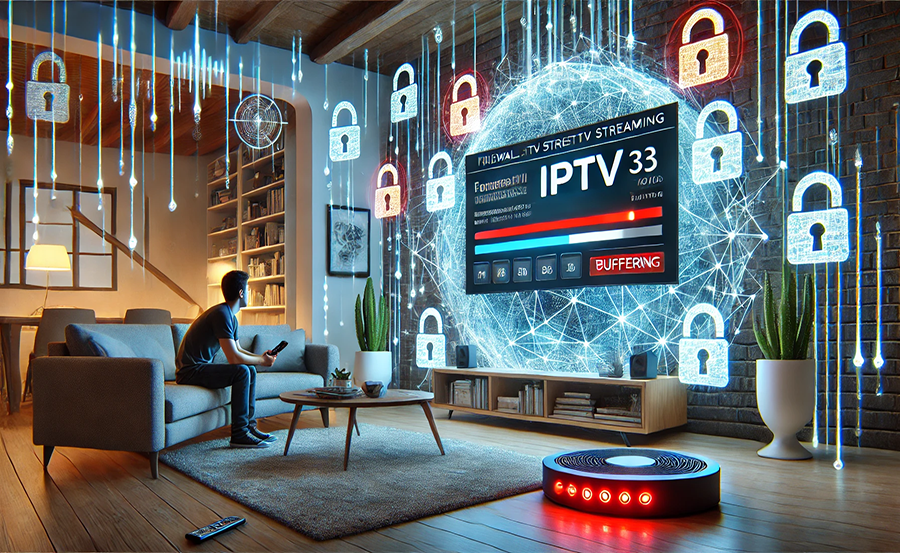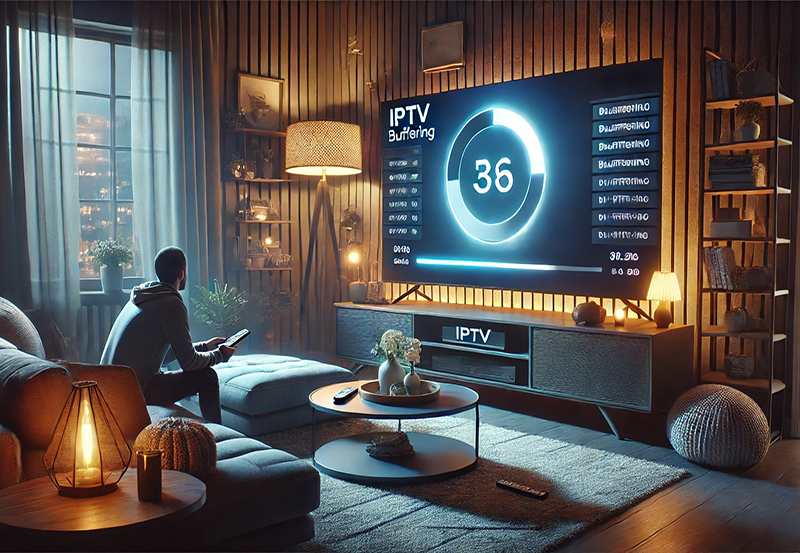Streaming quality, ease of connectivity, and minimal buffering are crucial factors in enriching your IPTV experience, especially if you are leveraging devices like the Firestick. But did you know that optimizing your router’s settings can significantly amplify this experience? This article delves into the nuances of router configurations that can enhance your quality time with IPTV. Carefully curated for enthusiasts and novice users alike, this guide sets you on the path of maximizing your streaming delight.
Understanding IPTV and Its Requirements
Internet Protocol Television, or IPTV, represents a paradigm shift in how content is delivered to your screens. Unlike traditional TV broadcasts, IPTV uses internet data, providing flexibility and an array of choices. It’s essential to comprehend the underlying needs of IPTV to make the most out of it.
The Basics of IPTV
IPTV services vary significantly, catering to diverse devices like Firestick, Android TVs, and even traditional set-top boxes with internet capabilities. A robust IPTV subscription plan ensures steady data flow, avoiding interruptions and buffering. Understanding this basic infrastructure helps you make informed decisions about your setup.
Key Requirements for Optimal IPTV Streaming
An IPTV subscription plan offers the gateway to a seamless streaming experience. However, matching your plan with a competent internet speed is crucial. Your internet connection needs to be robust enough to handle data-intensive tasks, providing a smooth IPTV service for Firestick or other devices. Buy 1 Year IPTV Subscription and Enjoy Unlimited Content
Some of the critical requirements include:
- Reliable internet speed, typically 10 Mbps or higher for HD streaming.
- A modern router capable of supporting seamless IPTV connections.
- Consistent updates and firmware checks to keep your gear primed.
Why Router Configuration Matters?
At the heart of your streaming setup lies the router. It acts as the linchpin, managing data packets between your service provider and your devices. Configuring your router right can lead to a world of difference in terms of streaming quality—offering an immersive streaming experience.
The Role of Routers in IPTV Streaming
Routers play a significant role in the distribution and quality of IPTV services. Mismanagement or wrongful settings can lead to bottlenecks, causing more harm than good. Routers direct your streaming traffic, optimizing paths for more efficient data transfers. Without this optimization, you end up with delayed feeds and poorer picture quality.
Challenges with Poor Router Configurations
Incorrect router settings are one of the major culprits behind suboptimal streaming. Issues such as:
– Limited bandwidth allocation
– Inadequate coverage
– Outdated firmware are common roadblocks in enhancing your IPTV experience.
Such issues can lead to frequent buffering, disconnections, or even an inability to connect to the IPTV service if not appropriately addressed.
Steps to Optimize Your Router for IPTV
To significantly upgrade your IPTV viewing aesthetic, you need to take a closer look at your router settings. Every inch of modification counts and can contribute to a considerably enhanced IPTV experience.
Setting Up Quality of Service (QoS)
One of the primary steps in optimizing a router for IPTV is configuring Quality of Service (QoS) settings. This ensures that streaming data is prioritized over less critical internet tasks. By queuing the IPTV service as a top priority, QoS facilitates uninterrupted streaming and minimizes buffering.
Here’s how you can set it up:
- Access your router’s admin settings via its IP address (commonly 192.168.1.1).
- Navigate to the QoS settings and enable the feature.
- Set the IPTV service’s data packets to high priority.
Bandwidth Allocation and Management
Your router’s ability to manage bandwidth directly affects your IPTV experience. You can allocate a specific amount of bandwidth exclusively for your streaming needs, ensuring that video data flows seamlessly. By knowing how your bandwidth is utilized, you prevent certain devices or applications from hogging it, leading to a harmonious streaming experience.
Checking the Current Bandwidth Usage
This initial step is crucial to understanding how data is currently consumed. With tools available in most modern routers, monitoring and managing bandwidth is no longer a chore for highly technical users alone.
Utilizing Dual-band or Tri-band Routers
Consider upgrading to a dual-band or tri-band router if you’re still lagging behind in the single-band era. These routers use multiple frequencies to distribute load efficiently, balancing usage between the 2.4 GHz and 5 GHz bands. This reduces interference, a common villain in streaming interruptions.
Why Dual or Tri-band?
With multiple bands at work, the congestion you experience while streaming translates to a far more balanced execution, thus improving your IPTV experience. The faster 5 GHz band can be reserved for video streaming, ensuring IPTV content performs to its potential.
Advanced Router Configurations: Going Beyond Basics
For the technically inclined, adjustable router settings offer opportunities to fine-tune networks for optimized IPTV streaming well beyond basic configurations.
Setting Up Administrative Tools
Enabling remote access and scheduling checks ensure your router’s performance can be monitored without having to be present physically. Such settings provide additional security layers while allowing adjustments when needed.
Ethernet Connection Over Wireless
While wireless connections provide convenience, sometimes, connecting your IPTV device directly via an Ethernet cable to the router can significantly reduce latency and buffer times, ideal for a steady HD or 4K stream.
Utilizing the Ethernet option takes advantage of:
- Stable connection without interference
- Consistent data speeds
- Lower latency for real-time applications
Firmware Updates and Router Replacement
Check for regular firmware updates that can offer new features, improve speed, and resolve known issues. At times, upgrading to a new router model might be warranted to leverage the latest technology, improving performance and future-proofing your network setup.
Financial Aspects: Cost vs. Benefit Analysis
Investing in quality router equipment and configurations might seem like a daunting expense. However, when weighed against the improved IPTV experience and fewer interruptions, the costs can often justify themselves.
Saving Money with Efficient Use
Expenditures on high-quality streaming services warrant thoughtful consideration over supporting hardware. A simultaneous shift to more economical IPTV subscription plans may counterbalance initial costs, leveraging savings that can be realized by reducing ancillary errors and faults.
Exploring Enhanced Service Plans
Many ISPs offer tailored packages that match your streaming needs. Assess service offerings, comparing what’s available against your current IPTV subscription plans. You might discover a more suitable or affordable plan tailored for expected high data throughput required for IPTV.
An Invitation to Maximize Your Streaming Delight
The landscape for IPTV is vast, with ever-evolving technologies pushing boundaries in streaming quality. Achieving the ideal setup for your IPTV service involves strategic adjustments and sound decisions regarding your router and subscription plans.
Ultimately, equipping your IPTV setup with the right gear and settings allows you to bask in uninterrupted, high-quality entertainment. Leverage the insights provided here as stepping stones on your journey to maximize your streaming delight, one optimized configuration at a time.
Frequently Asked Questions

How can I improve my IPTV streaming quality on a Firestick device?
Begin by optimizing your internet speed & ensure your router configuration prioritizes IPTV data packets. Also, consider using a dual-band router, allocating the faster band to your Firestick device.
Is a wired connection better than Wi-Fi for IPTV service?
Yes, using an Ethernet cable offers a more stable and reliable connection, reducing latency and buffering, making it ideal for high-quality IPTV streaming.
How often should I update my router’s firmware?
Check for firmware updates regularly, at least once a month or whenever your manufacturer releases an update. Keeping your firmware current ensures the latest security patches & performance enhancements.
Is investing in a tri-band router worth it?
If multiple devices compete for bandwidth, a tri-band router can significantly reduce congestion, allowing seamless streaming for IPTV among other activities.
Can QoS settings impact other internet activities while streaming?
Properly configured QoS prioritizes streaming traffic without completely hindering other activities. However, implementation varies and should be adjusted gradually to suit household needs best.
How do I select the right IPTV subscription plan?
Analyze your viewing habits, preferred content types, and compatible devices like Firestick. Compare providers based on ratings, plan costs, and performance reviews for an optimal choice.
What router brand is best for IPTV services?
Brands like ASUS, Netgear, and TP-Link are popular, offering features that enhance IPTV streaming. However, selecting the best router should balance performance, features, and cost to meet specific needs.
The Impact of Network Interference on IPTV Streaming: How to Fix It





